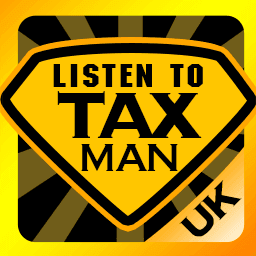Self-Assessment Guide by Listentotaxman
*Please note the information in this article may be out of date
Our guide to making your online self-assessment return with tips on reducing your tax bill and avoiding fines.
Tue, 07 Dec 2021*HMRC COVID19 update 25th January 2021- Self-assessment customers will not receive a penalty for their late online tax return if they file by 28th of February. However any tax due for 2019-2020, that has not been paid on the 1st of February, will begin to incur interest. The usual rate is 2.6%. As penalties on tax owing do not begin until the 2nd March, this means that a return made before the 28th February will cost the taxpayer interest on tax owing, but no flat rate fine or penalty. In real terms, this is an extension to the deadline for those who owe little or no tax.
It is not just the Self-Employed who are required to make an annual self-assessment return. Many people who have their taxes collected through the PAYE system are still obliged to make a self-assessment return, for example Company Directors; those with foreign income; those whose income exceeds £100,000 a year; those affected by the Child Benefit Charge (earning over 50k and still in receipt of child benefit).
Who needs to complete a self assessment tax return?
Self-assessment does not affect everyone, as most UK taxpayers pay tax through PAYE (Pay As
You Earn) and are not required to file a tax return. You will usually only need to complete a self-
assessment tax return if any of the following applies:
- You work for yourself and you are self-employed
- You’re a partner in a partnership business
- You’re a director of a company (exception to the rule is if you are a director of a not-for-profit organisations who receives no pay)
- You’re a minister of religion
- You’re a trustee or an executor of an estate
- You’re a member of parliament
- You’re a Lloyds underwriter
- Maybe if you are a non-resident UK citizen
- Your income exceeds £100,000 a year
- You earn over £50,000 and are in receipt of Child Benefit- note that 2021/22 tax year is the first time this threshold is less than the earning threshold for a basic rate tax payer (£50,270)
HMRC’s wizard https://www.gov.uk/check-if-you-need-a-tax-return will help you identify whether you need to complete a return or not.
Anyone who completed a self-assessment return last year, will probably be obliged to do so again this year, unless there has been a change in circumstances. Once HMRC send you a self-assessment form, or a 'notice to file', you are legally obliged to complete and return it, whether online or by post, even if no tax is owing.
The deadline for paper (postal) self-assessment returns is 31st of October. As of April 2020, anyone who has previously submitted a paper tax return, will be sent a notice to file digitally (online) by HMRC. In circumstances where HMRC has identified that someone can not complete their return online, paper forms will have been sent out.
Read more: https://www.which.co.uk/money/tax/income-tax/self-assessment-tax-return/paper-tax-returns-acsfn0l9pu73 - Which?
The deadline for making an online self-assessment return is the 31st of January. Making an online self-assessment return is a relatively straight forward task. You will need to have certain documents and information to hand, these are listed further on in this guide. Remember this deadline is for both the tax return and payment of tax owing.
Failing to make a return and pay any tax owing on time will result in hefty fines. Even if you don't owe anything in tax, you will still receive fines for not making a zero owing return. For an idea of late filing fines by HMRC see the bottom of this article. Getting your return in on time saves money. If you are late in making your return, don't delay any further as every day can be costly. Even if you can not afford to pay the tax owing, at least make a return without the payment and save yourself some of the fines (details of fines are below).
Have you registered with HMRC to make an online Self-assessment return?
Please note that the steps bellow take some time so do not leave registering with HMRC for online returns until close to the 31st January deadline! HMRC advise a deadline for registering by the 5th of October of your business' second tax year. If you have missed that, contact HMRC to register ASAP.
- If making your first online return you will need to register with HMRC. For this you will need your National Insurance Number. You set up a username and password which you should keep a record of as you will need it to log on in future.
- You will then receive an activation code in the post which you use to activate your account by logging on and inputting the code. This needs to be done within 28 days of receipt, or another code will have to be re-issued.
- Once registered you will receive your ten digit 'Unique Taxpayer Reference' (UTR) in the post. You will need this to make your return.
Making your Return: what you need and some handy tips
There are certain documents and information which you will need in order to complete your return. If you are very close to the deadline and you can not get some of these important figures/ documents, give a reasonable estimate. You can explain in the notes section on the form to HMRC that the figure is an estimate. Then log in as soon as possible with the accurate figure. Don't miss the deadline and incur penalties if you can avoid it.
- Though the online deadline for return of your self-assessment form is the 31st January, a handy tip for those who owe less than £3,000 is to complete your online return by the 30th December. If you do you can avail of the option to have HMRC collect the tax you owe through your tax code. This means tax payments would be spread throughout the year, rather than in one lump sum on January 31st. (Assuming you have income from employment and there are sufficient earnings to deduct the tax).
- Employment information- P60 if you don't have it you could use a wage slip for the month of March, ie. just before the end of the tax year you are making a return up to. If you can not find March's wage slips, statements etc., use the telephone to contact your employer to get the information. If you have registered for the HMRC online services then this information may also be shown in your personal tax account.
- Pension contributions, statements or receipts. If you can not find these, contact your pension fund manager and get the figures needed.
- Bank interest certificate for information on income from savings. Also include any interest on investments and dividends (whether cashed or reinvested) on your return. Again, phone the bank if you can not find the certificate. For information on how much interest from savings you can earn tax-free each year, see our Guide to your Personal Savings Allowance.
- Information on income from letting property (or losses from it).
- Figures for any other forms of income
- Totals from previous submitted self-assessment forms so you can see if there are previous losses which can be carried forward to offset against this years income. HMRC have information on claiming losses against income for self-employed.
- Allowable expenses, both personal (pension contributions, charitable donations) and business. See our articles on allowable expenses for both Self-Employed and PAYE paying employees.
- Consider if Capital Gains applies to you this year, eg. have you sold a property? Or have you incurred a loss? If so you need to fill out the relevant section.
- Do not round up your figures. HMRC have implied that rounding up figures is a sign that people have not been detailed in maintaining their accounts and could attract further attention from HMRC.
- If you have gone over your allowable pension contribution, check previous self-assessment returns as you may be able to carry forward unused allowances from previous years, see more here.
- Check you have the right tax code. Your tax code determines how much tax is deducted from your wage or pension. If it is incorrect, you could be paying too much tax.
HMRC have written a guide on completing your return.
If you’re looking for an easy way to calculate and submit your tax return, then we’re big fans of GoSimpleTax. Our team use this software for their own personal Self-Assessment return. Anyone can use the software free for 14 days. If you find it easy to use and want to submit your return, then only at that point will you need to provide any payment details. For most people the cost is £49. Why not give it a go?
Penalties for Late Return of Self-Assessment (regardless of whether tax owing or not)
*HMRC COVID19 update 25th January 2021- Self-assessment customers will not receive a penalty for their late online tax return if they file by 28th February. However any tax due for 2019-2020, that has not been paid on the 1st of February, will begin to incur interest, the usual rate is 2.6%. As penalties on tax owing do not begin until the 2nd March, this means that a return made before the 28th February will cost the taxpayer interest on tax owing, but no flat rate fine or penalty. So, in real terms, this is only an extension on the deadline for those who owe little or no tax.
1st Feb, 1 Day late = £100 fine from the 1st February. (For 2020 a COVID related extension of this fine until 28th February)
1st May, 3 Months late = £10 a day fine up to a maximum of £900 (90 days) for every day it is late
1st Aug 6 months late = £300 fine or 5% of the tax owing, which ever is greater.
1st Feb 12 months late = another £300 fine or 5% of the tax owing, which ever is greater.
Penalties for Late Payment of Tax Owing
2nd March payment now 30 days late = 5% charge on the tax owing on that day
1st August payment now 6 months late = 5% charge on the tax owing on that day
1st Feb payment now 12 months late = 5% charge on the tax owing on that day.
Interest is charged on the tax owing including the amount levied in charges at a rate of 3%.
It should also be noted that if you make a return which is incorrect, and HMRC feel that you were either careless, or misleading them on the amount of tax you owe, they can charge a further 30% to 70% of the tax owing. In cases of deliberately concealing and misleading them they can charge 100% on top of the tax owed.

 Our Favourite Tax App?
Our Favourite Tax App?
It's Simple
ListenToTaxman has teamed up with GoSimpleTax, online Self Assessment software to bring you, what in our view, is the easiest way of calculating and submitting your tax return we’ve seen so far.
Key in your income and expenses into the software, and it will flag up any unclaimed allowances. Simple. Once you’re comfortable with the information you’ve entered, simply submit via the software to HMRC. You’ll just need your Unique Tax Reference Number (UTR) found on most tax correspondence. GoSimpleTax software is free to try. If you don’t think it’s right for you - don’t pay anything. If you do choose to submit your tax information via the software, then you will pay £54.99 for an individual return – multiple returns and Parnerships are available too!
